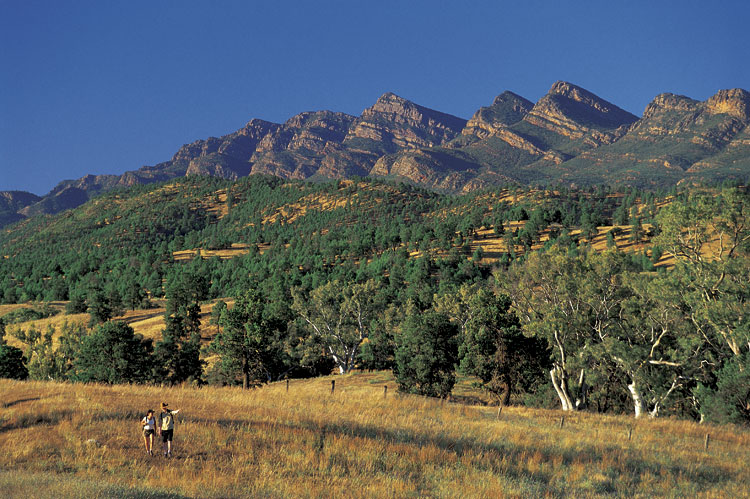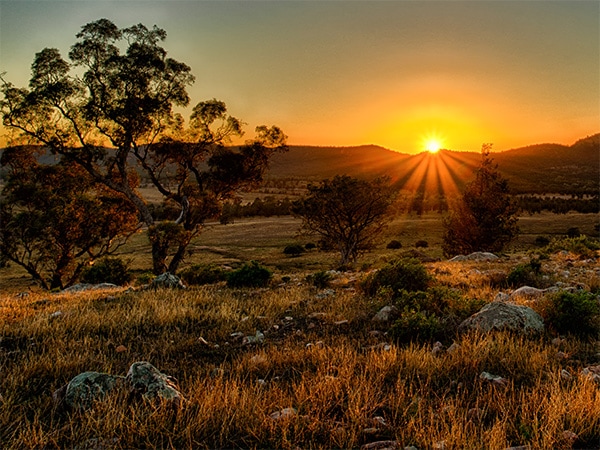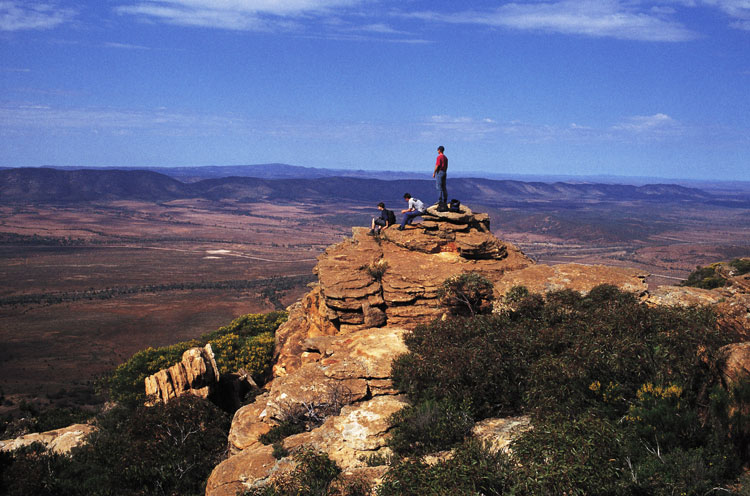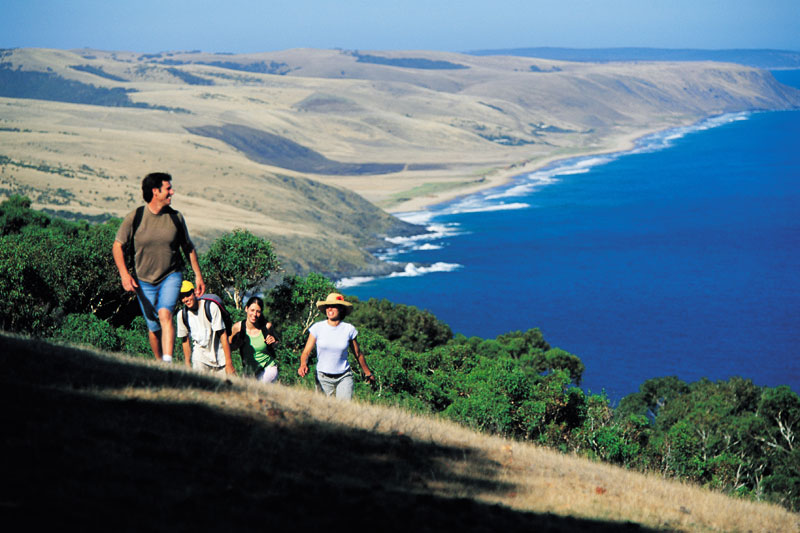31 March 2020
![]() 4 mins Read
4 mins Read

The trail’s best sections are its bookends: the northernmost 60km between Parachilna Gorge and Wilpena Pound Resort, and the southernmost 60km between Cape Jervis and the holiday town of Victor Harbor.
The longest and most committing of the four routes is SA’s Heysen Trail, stretching 1200km from Cape Jervis, south of Adelaide, to Parachilna Gorge in the Northern Flinders Ranges.
Constructed throughout the 1970s and 1980s, it takes its name from Sir Hans Heysen, the artist whose paintings so popularised the Flinders Ranges.

Walk the Heysen Trail in the Flinders Ranges
An unforgiving trail, large chunks of it cross through semi-arid lands in and around the Mt Lofty and Flinders Ranges.
Water is scarce, making the hauling of reasonably large volumes of water necessary, and the heat can be brutal, with sections of the track through private land closed to walkers between about November and March.
The nature of the terrain and long sections of road walking mean that the Heysen Trail is the least consistently spectacular of the long-distance routes, though the dry, cleared landscape also makes it perhaps the most representative of the true Australian landmass.
It could be said (for better or worse) to be the full Aussie package, incorporating city views, coast, mountains and vast tracts of outback as it heads north through the Flinders Ranges. Along its course, it crosses many of SA’s major peaks, including Mts Lofty, Remarkable, Brown and the Dutchmans Stern, as well as passing through the flat heart of Wilpena Pound.

The surroundings are enough to make everyone stop and admire.
Most walkers will take about 60 days to walk the Heysen Trail from end to end, though very few take on this enormous mission in one outing.
For many, the process of walking the Heysen takes years, walking it separate section by separate section. The trail’s best sections are its bookends: the northernmost 60km between Parachilna Gorge and Wilpena Pound Resort, and the southernmost 60km between Cape Jervis and the holiday town of Victor Harbor.
At the northern end, out of Parachilna Gorge, the trail sets out along dry creek beds pinched between the ABC Range and the twisting, swirling rock of the Heysen Range.
Points of interest along this section are many and varied, including the Aroona Valley, where Hans Heysen painted a number of artworks; a variety of lookouts; and wonderfully isolated views across the Bunyeroo Valley, one of the Flinders’ trademark scenes.
This route makes for a comfortable three-day walk, camping at Aroona Valley and beside Yanyanna Hut. It can also be stretched out to four days with a stop at Trezona campground.
By spending a night at Yanyanna you can have the added bonus of setting out above the Bunyeroo Valley at dawn, the finest time of day for this classic view.
The southern end of the Heysen Trail is a picture of contrast.

The Deep Creek Conservation Park at the coastal end of the Heysen Trail.
Here, it’s all about the sea and rugged coast, beginning at Cape Jervis and pushing through beautiful Deep Creek Conservation Park, where Blowhole Beach and Boat Harbour Beach stare across Backstairs Passage to Kangaroo Island. Seal and dolphin sightings aren’t uncommon.
Out of Deep Creek there’s a long, sandy haul along Tunkalilla Beach (where the marine sightings are as likely to be sharks) before the track veers inland, returning to the coast at Waitpinga Beach, more famous for its waves than its walking.
Beyond Newland Head, cliff-top roads and tracks lead towards the edge of Victor Harbor, with the cliffs affording seasonal opportunities to spot southern right whales (June to September).This southern section contains no mountains but the severity of the coast means a significant amount of climbing, so it’s worth allowing four days.
There are seven campsites along the route, so options are plentiful for breaking up the days.
LEAVE YOUR COMMENT